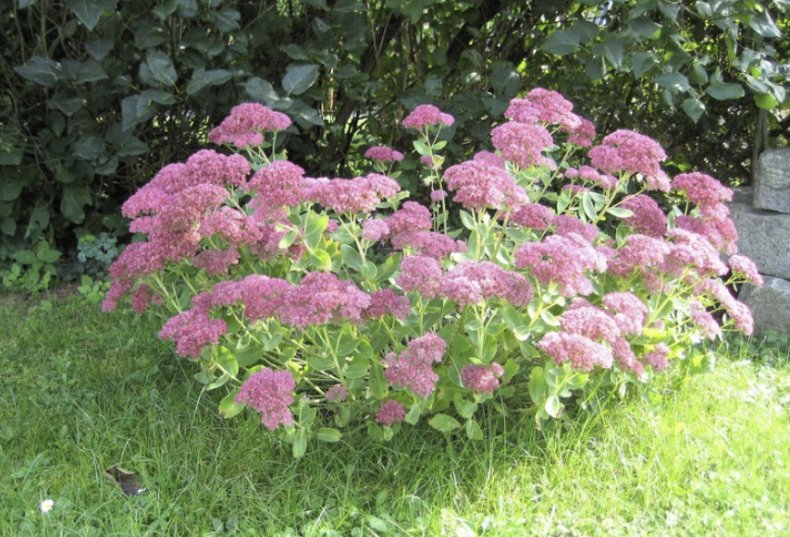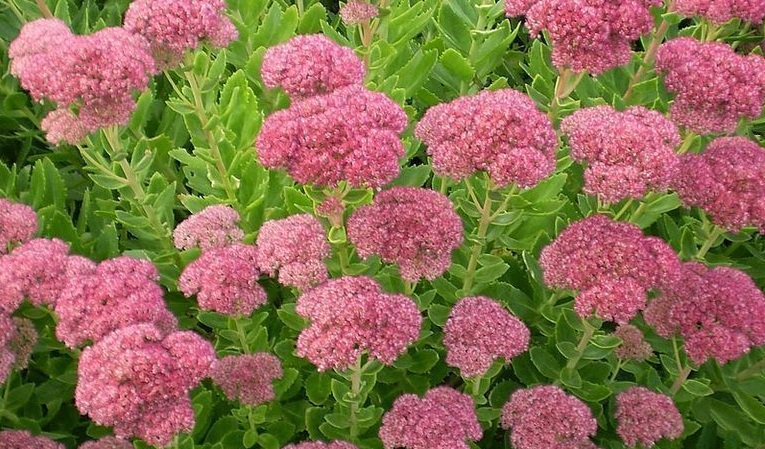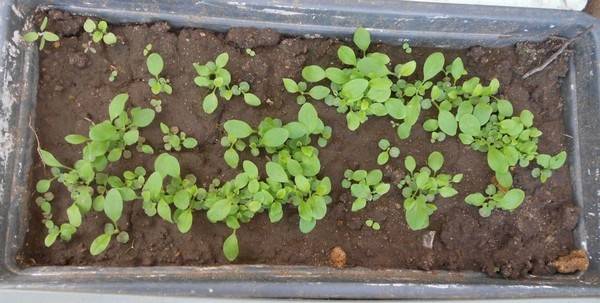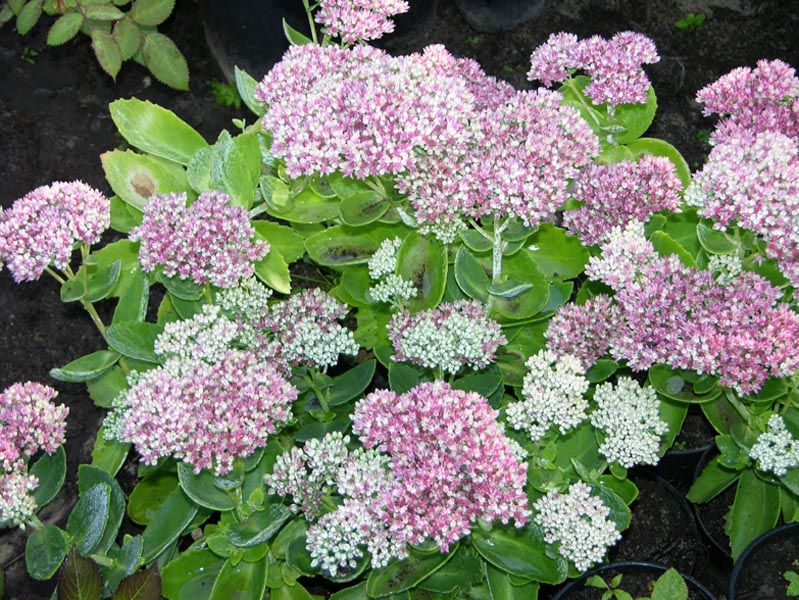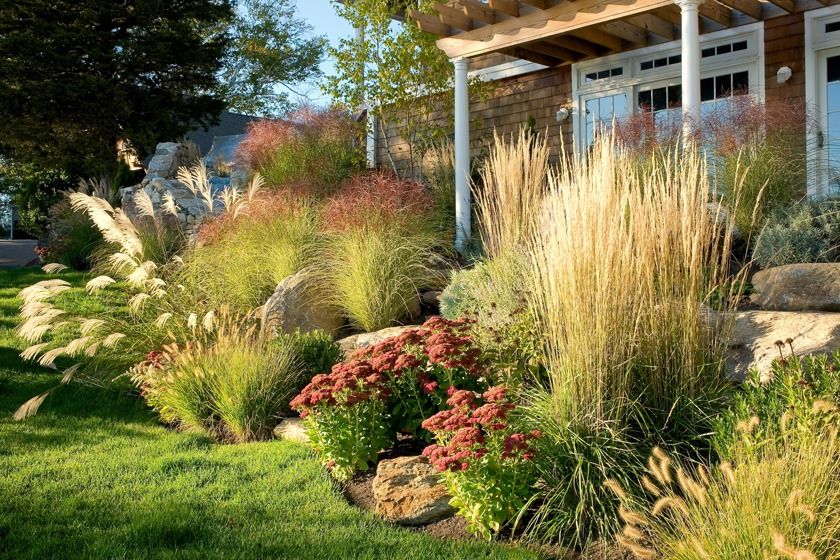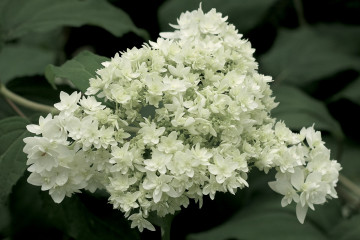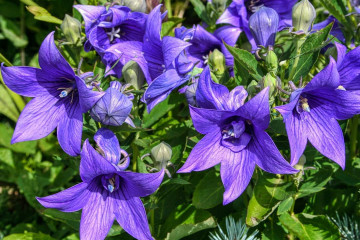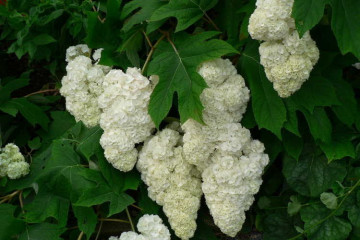Sedum prominent - varieties, planting and care
Content: [Hide]
Sedum is a prominent plant that will delight with lush colors until the first frost, when other flowers and bushes plunge into the gray color of autumn melancholy. Its shades are varied - pink and white, yellow and cream, lilac.
Description of stonecrop prominent
Stonecrop bush native to Japan, grows in northeastern China and Korea. Considering the fact that in its natural environment it grows in rather harsh weather conditions, its relation to low temperatures and drought is good.
It is a succulent with fleshy stems and sprawling leaves. The sedum has a height of 40 to 80 cm, depending on the variety. The inflorescences are in the shape of an umbrella, their diameter ranges from 15 to 20 cm. The succulent is perennial, with the right conditions it tolerates winter well.
Description of the most common representatives of the species that are used in landscape design of sites:
- Sedum Brilliant - grows from 30 to 40 cm. Inflorescences are colored in light, delicate fuchsia. Leaves are oval, green. It is characterized by long flowering, which starts from the second week of August and lasts until frost. Brilliant Stonecrop is used by breeders to breed new subspecies.
- Sedum Frosty Morn - white petals, stem grows up to 45 cm.
- Sedum Magnificent or Wonderful - one of the tallest bushes, which reaches 60 cm. Inflorescences can be green, light purple and white.
- Sedum Red-leaved or False - creeping stem, up to 40 cm high. The petals are colored purple. Blooms from June to August.
- Sedum Burgundy or Purpl Emperor is an unusual bush in which buds, leaves and stems are painted in a deep burgundy color.
- Stardust - short stems that stretch up to 35 cm. The color is cream, but there are specimens with white petals.
Planting a plant
Sedum care and reproduction is not difficult. You can increase the number of bushes by the following methods:
- cuttings;
- cut off stems;
- parts of the roots;
- bush division;
- seeds.
Each of the methods has its own disadvantages and advantages. Seed planting is rarely used, because it is a rather complicated and time-consuming process.
Planting from seeds
Disembarkation takes place in March. Algorithm of actions:
- Pour a substrate of sand and fertile soil into the box. Place the seed in the ground at a distance of at least 4 cm from each other. Do not deepen, sprinkle on top with a thin layer of earth.
- Moisten with a spray bottle, cover the box with plastic wrap or glass to create a greenhouse effect.
- Place the container on the bottom shelf of the refrigerator, where the temperature should be between 0 ℃ and +5 ℃. Remove the film for 30-40 minutes every day to ventilate the soil.
- After 14 days, transfer the container to a warm room. Temperature range from +18 ℃ to +20 ℃.
Seedlings will appear in 2-4 weeks. As soon as several full-fledged leaves are formed on each bush, they can be planted outside.
Planting seedlings in open ground
Planting seedlings in open ground is carried out in the middle of spring, when there is no longer a chance of frost return. The succulent is not whimsical to the composition of the soil, but in order to achieve abundant and long flowering, it is recommended to fertilize the soil with compost or humus.
The holes are placed at a distance of up to 20 cm from each other. After placing the bushes in the ground, they need to be watered abundantly.
How to care for stonecrop prominent
Taking care of the bushes is not at all difficult. Watering, feeding and adequate lighting are the main conditions for growth and flowering.
Watering
Watering should be moderate. The sedum plant does not like abundant moisture. Natural moisture is sufficient during the rainy season. With prolonged drought, it is enough to water the bushes 2 times a month. Water pours down to the root.
Top dressing
If, when planting seedlings, the soil was fertilized with humus or compost, there is no need for top dressing for 1.5-2 years. If the bushes grow on land that is poor in nutrients, before and after flowering, it is necessary to apply mineral complex fertilizers intended for succulents.
You need to use top dressing carefully, not overusing its amount. Due to too many mineral elements in the ground, the bushes will grow too quickly and grow apart, because of which they will begin to lose their decorative properties.
Pruning
As such, it does not need pruning. The only thing to do is to cut off wilted buds and damaged, brittle or dried branches after flowering.
Reproduction methods
Bushes can be propagated in the following ways:
- Cuttings - before the onset of hot summer, cut off the cutting with a sharp pruner, submerge it in water. After the roots appear, place in a nutritious soil.
- Parts of the root system - dig up a bush with roots, divide it into several parts. Treat the cut with a fungicide. Dry the roots in the air for 6 hours, lower them into the ground.
- By dividing the bush - carried out on a mature succulent. Dig out a bush, divide it into several parts with pruning shears so that each part has a root system and buds. Air dry for 5-6 hours, bury in a place with sufficient sunlight.
- With the stems of the removed buds - cut off the stem, put in water. After the roots appear, plant it in the soil.
Transfer
You can transplant a succulent plant in early summer, before the heat sets in. The bush is carefully dug out of the ground so as not to damage the roots. If he is already an adult, it is recommended to divide him into several parts. Before moving to a new place, the ground in the prepared hole must be fed - wood ash and a small amount of rotted humus are added.
After placing the bush in the hole, it must be covered with earth and tamped.
Diseases and pests
Diseases of stonecrop are rare. Due to abundant watering, fungus can occur. It manifests itself by rotting of the root system and the appearance of dark spots on the leaves. Treatment consists in removing the damaged parts and destroying them. Neighboring bushes are treated with fungicides for prophylaxis. If the measures taken are not successful, sedum should be destroyed.
Of the pests, there is aphid, weevil, green leafworm. You can get rid of them by treatment with Actellik, prestige preparations.
Flowering period
The sedum flowering is abundant and long-lasting. Depending on the subspecies of the bush, this period can begin from the end of May, the first month of summer and last until late autumn. During flowering, special care is not needed, only ensuring sufficient watering.
Preparing for winter
If the bush is annual, you do not need to cook it for winter. In perennials, before the onset of cold weather, withered buds and damaged, dry branches are cut off. If the winter is very cold, the succulent should be covered with sawdust or fallen leaves.
Use in landscape design
On the site, flowering bushes are planted both singly and in groups. They look best among stones, as edging borders and on flower beds.
Beneficial features
The inflorescences and leaves are used to make various traditional medicine recipes at home. On their basis, ointments, tinctures and poultices are made. Beneficial features:
- relief of headaches, regardless of their etiology;
- stopping bleeding;
- wound healing;
- acceleration of regeneration at the cellular level;
- normalization of the central nervous system;
- increasing the tone and elasticity of the walls of blood vessels;
- strengthening the immune system;
- restoration of the well-coordinated work of the organs of the gastrointestinal tract;
- antibacterial action.
Beautiful, colorful shrubs that bloom in different colors are a wonderful touch in landscape design. They are loved for their unpretentiousness, rapid growth and lush, long flowering. Succulents are useful for human health, they have a beneficial effect on the work of internal organs, and therefore use them as raw materials for the preparation of various traditional medicines.
